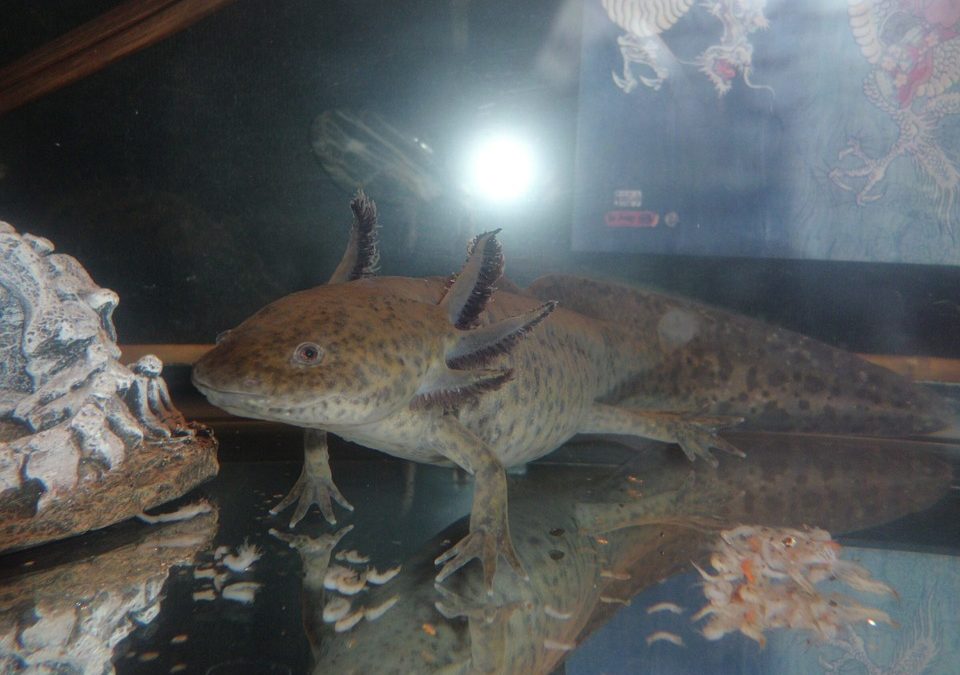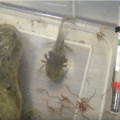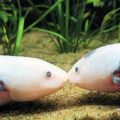Table of Contents
If you want to acquire an Axolotl as pets, you should talk to a representative from your state’s agency. Axolotls are legal in most places in America. They are legal to own but illegal to import from other states. Depending on your state, you may be able to acquire an axolotl from a breeder or an exotic pet dealer/ hobbyist. Make sure to not buy these animals through the internet or any other kind of black – market or illegal pet trading schemes. We highly recommend that you speak to an exotics veterinarian if you are looking for the right breeder. Axolotls as pets are delicate and soft – bodied amphibians with permeable skin which implies that Axolotls should not be handled unless absolutely necessary. They are not social creatures and don’t necessarily need another one of its kind to survive.
The Axolotl is a popular pet that breeds quite easily in a tank; it is a beloved pet not only because of its qualities but mainly because of its friendly appearance. There are a lot of axolotls that live in captivity. There are also lots of axolotls every year that are being used in scientific research and it’s usually because researchers just can’t get enough of their amazing regeneration abilities thus axolotls are studied in laboratories all over the world.
Axolotl Size
Axolotls can reach around 10 inches from their nose tip down to the end of their tails. There are some that reaches around 12 inches or more but it’s quite rare to find one. Once they reach about 8 inches, they can already be considered sexually mature but this can take around 6 months to a year provided that they are properly taken care of.
Housing
Axolotls can get quite large for a salamander which is why you need to provide them at least a twenty gallon fish tank. The tank doesn’t have to be full of water because it should only be a bit deeper than the full length of the animal. Make sure that the tank is kept in a cool room away from bright sunlight. The water temperature should be kept cool, between fourteen and twenty degrees Celsius, and never allowed to get abovetwenty – four degrees. No special lighting is required for axolotls compared to reptiles. A place to get out of the light may be appreciated such as a flower pot laid on its side or an aquarium castle. Make sure that the gravel you used on the bottom of the tank is coarse gravel. Fine gravel might be ingested during feeding and could cause an obstruction which can lead to digestive problems. Some owners opt to simply leave the bottom of the tank bare, although others believe this may stress the axolotls a bit since they can’t get a foothold without gravel on the bottom of the tank.
Food
The movement of live food like a worm is a great stimulus for this animal to snap at it. As for newly hatched axolotls, movement of the prey is the only stimulus to which they will respond. Earthworms are a good food source for matured ones, but just make sure to get them from a source that doesn’t use chemicals such as an organic garden otherwise the chemicals may affect your Axolotl one way or another. We highly recommend that you raise these earthworms or any feeders yourself if you have the time and space so you can also have the option to gut – feed them and pass on the nutrients to your pet. Don’t try to feed your Axolotl with live feeder fish because these are known to carry diseases and they usually are infected with parasites so never offer that to your pet Axolotl otherwise it could be fatal for him/ her.
You can also use soft sinking salmon feed pellets because most owners find that they are well – received by axolotls. These pellets are soft, moist, and retain their shape for a long time. If you feed mealworms to your axolotl, be careful because the chitin which is the protein that makes up the hard exoskeleton in insects could be indigestible to the axolotls. The Indiana University Axolotl Colony, when it still existed, fed its axolotls with high protein and vitamin fortified pellets designed for salmon. The pellets are 45% protein and 20% fat but then they eventually found that the axolotls didn’t like the hard variant of pellet which is why you need to ensure your pellets are soft.
Tank and Filters
Most owners will find a filtered aquarium easier to maintain than one without a filter since unfiltered water will need frequent changing. Make sure that if you have a filter on the tank, the filtration rate should be fairly slow. Powerful filters that create strong currents should be avoided. If you have a filter, safe cleaning would consist of using a siphon to vacuum the bottom of the tank, and a twenty percent water change must be done every week. If you are not using a filter, you will have to do a twenty percent water change every day or every other day. Don’t do a full water change as this can start a situation where the water chemistry changes too drastically that will make your pet uncomfortable. Tap water should have any chlorine or chloramines removed using commercially available solutions. Don’t use distilled water.
Handling and Temperament
Axolotls have virtually no true bone in their bodies especially when young, and this is because most of their skeleton is made up of cartilage. And for this reason, axolotls should not be handled unless absolutely necessary. In fact, they are quite tricky to catch in a net. Make sure that if you use a net to move an axolotl, don’t use nets with mesh as it can damage an axolotl’s fingers. You can opt to use a soft and very fine – mesh net.
Young axolotls as pets may bite or nip the legs/ gills of their fellow tankmates which is why juveniles should be raised on separate containers; this will also ensure that your pets have plenty of space and will be well – fed. You can start housing them together once they reach around 5 inches in length because adults rarely have any altercations. And because Axolotls can still have a tendency to nip, it’s not advisable that you keep them with fishes or other sea creatures. You can only keep them with fellow axolotls once they became adults. Keeping multiple axolotls as pets is purely for the keeper’s benefit and for breeding.






 Author and long-time animal lover. Sharing knowledge on pet care through experience and the written word.
Author and long-time animal lover. Sharing knowledge on pet care through experience and the written word.